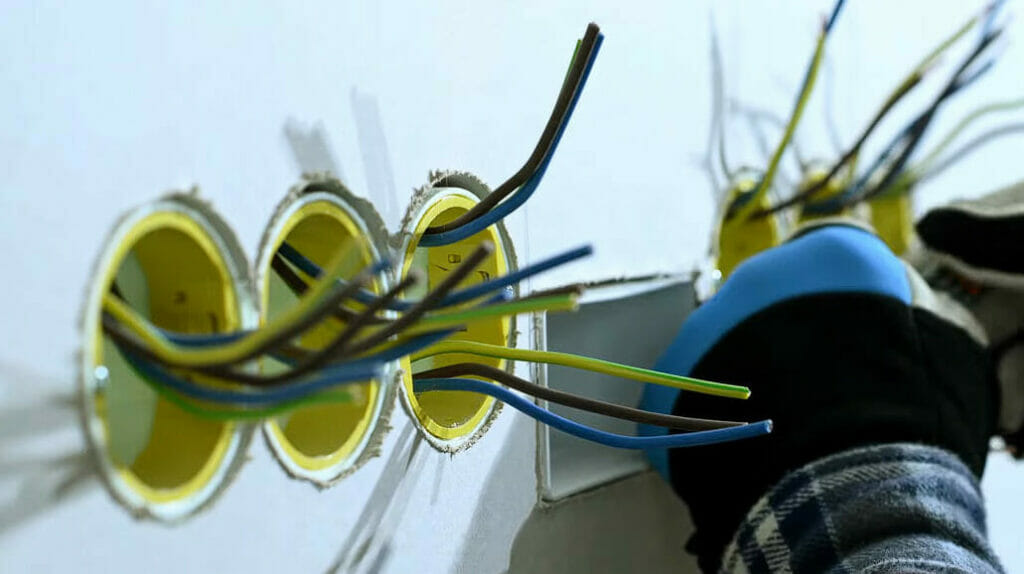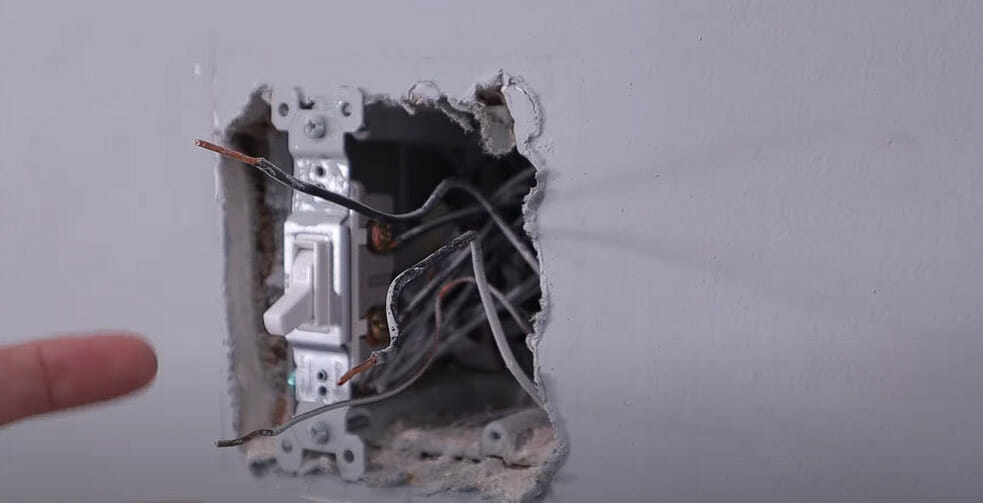Is Common the Hot Wire? (Roles, Color, Applications)

For those who wonder, in electrical wiring, ‘hot’ refers to a wire that carries current from the power source to the load – be it your TV, refrigerator, or any other appliance.
Typically, the common wire is NOT hot. It’s usually a neutral wire, and its job differs from a hot wire. While the hot wires deliver power to devices and appliances in your home, the neutral wire completes the electric circuit by carrying current back to the source.
Let’s dive deeper into these concepts.
Is Common the Hot Wire or Not?

It’s time to tackle one of those confusing questions for many – is the common wire, also known as neutral, hot, or not?
It’s a topic I’ve seen often in forums and discussions. Let’s clear this up once and for all.
First off, let me say that the common wire is typically NOT hot. Now let’s dig a bit deeper.
In most residential wiring systems, you’ll find three types of wires: hot, neutral (common), and ground. The function of each wire is pretty straightforward:
- Hot Wires: These are usually black or red. They carry electricity from the breaker box to your devices.
- Neutral (Common) Wires: Most often white or gray, they return electricity to the breaker box after it has flowed through your device.
- Ground wires: Usually green or bare copper, provide an emergency path for electricity if something goes wrong.
Now you’re probably wondering why some people get confused about whether the common wire is hot.
Partly it’s because there may be voltage on a neutral wire due to imbalances in load between two hot wires in 240V circuits (a more complex issue), but mostly it stems from misunderstanding what ‘hot’ means in electrical terms.
When we talk about a ‘hot’ wire, we’re referring to a live wire carrying current from the source.
In contrast, while the current does flow through neutral wires when part of an active circuit, they’re not directly connected to the power source like hot wires are – hence they’re not considered ‘hot.’
Practical Applications of Hot and Common Wires
| Scenario | Description | Role of Hot Wire | Role of Common Wire |
|---|---|---|---|
| Installing a Light Switch | The switch interrupts the hot wire, allowing the user to control the flow of electricity to the light fixture. | The hot wire is interrupted by the switch, allowing the user to control the flow of electricity to the light fixture. | The common wire completes the circuit, allowing electricity to flow back to the source when the light is switched on. |
| Installing an Appliance | Many large appliances, like ovens or dryers, need a 240-volt circuit, which typically includes two hot wires. | The two hot wires carry 120 volts each, adding up to the 240 volts needed for the appliance to operate. | The common wire provides a return path for any unused current. |
| Fixing an Outlet | If an outlet isn’t working, it’s important to know which wire is hot and which is common. This knowledge can help diagnose and fix the problem. | The hot wire delivers power to the outlet. If there’s a problem with the hot wire, the outlet won’t receive power. | The common wire completes the circuit. If there’s a problem with the common wire, the outlet won’t function properly because the circuit is incomplete. |
| Installing a Ceiling Fan | When installing a ceiling fan, it’s essential to know which wire is hot and which is common to ensure the fan operates properly and safely. | The hot wire delivers power to the fan. The fan speed can be controlled by interrupting the hot wire. | The common wire provides a return path for the current, ensuring the circuit is complete and allowing the fan to operate. |
Hot Wire: What Is It?

Now, you might be wondering what exactly a hot wire is.
In simple terms, a hot wire is an electrical term used primarily in North America. This refers to a wire that carries current from the power source to an electrical device or load.
If your house were like the human body, these would be akin to arteries pumping life-giving blood (or electricity) to every nook and cranny.
But why is it called ‘hot’? That’s because it’s energized or ‘live.’ Touching a hot wire can result in an electric shock as current flows through your body towards the ground – so always stay safe!
Now let’s talk about how we identify them. In general, the standard color for hot wires in residential and commercial wiring is:
- Black
- Red
- Blue
- Brown
Each of these colors signifies different things:
| Color | Purpose |
|---|---|
| Black | Generally indicates a primary live wire |
| Red | Often denotes secondary live wires or certain switch legs |
| Blue & Brown | Frequently found in 3-phase systems and large appliances |
It’s important not to assume, though! Always consult with an experienced electrician if you’re unsure.
Remember, folks, while understanding our electrical systems can be fascinating, safety should always come first! So leave those hot wires alone unless you’re trained for it.
Common Wire vs. Ground Wire Comparison

Let’s review again – what exactly is this common wire? Simply put, it’s a neutral or return path for current in an electrical circuit.
When you switch on your living room light or start your computer, the common wire completes the circuit and allows electricity to flow back to its source.
Without it, we’d have no lights, no computers – basically, none of our everyday electrical appliances would work!
Now let’s get technical for a moment. In a typical 120-volt AC circuit (the kind you’ll likely find in your house), there are usually three wires: hot, neutral (or common), and ground.
The hot wire carries the current from the power source to the load (like your laptop or refrigerator). Then comes our unsung hero – the common wire that safely returns any unused current to its source.
Let me give you an idea with some numbers:
| Wire Type | Voltage |
|---|---|
| Hot | 120 V |
| Common | 0 V |
| Ground | 0 V |
As you can see from this table, while both common and ground carry zero volts under normal circumstances, their roles differ significantly:
- Common: Carries unused current back to its source.
- Ground: Acts as a safety net during faults or surges.
So is it common for the hot wire? Not really! These two play very different parts in an electrical system; they’re like actors playing distinct roles on stage – both crucial but unique!
To sum things up here – if you think about your home’s wiring as an intricate dance routine where every movement matters, then each type of wire performs its special step.
The hot brings in energy while our good friend—the common—helps complete the loop enabling us to have all those modern-day conveniences at our fingertips!
Misconceptions and Risks Surrounding the Common Wire
Here are some of the most common misconceptions:
- Common Wire Is Always Neutral or Ground: This is not always true. In a three-way switch, the common wire can be the line (power supply) or the load (connected to the device). The common wire isn’t necessarily a neutral or ground wire, though these terms are sometimes confused.
- Common Wire Carries No Current: The common wire, especially when it refers to the neutral wire, actually does carry current. It’s the return path for current in a circuit. When a circuit is active, there’s current in the common wire.
- Common Wire Cannot Cause a Shock: This is a dangerous assumption. While in a correctly functioning circuit, the common or neutral wire is at a near-zero potential relative to the ground, situations like a reversed hot and neutral wire or a break in the neutral line can lead to a live voltage on the neutral wire. Therefore, assuming that a common wire can’t cause a shock is never safe.
- Any Wire Can Serve as a Common Wire: This misconception can lead to dangerous circumstances and circuit malfunctions. The common wire has a specific role in a circuit, and wires are designed with certain ratings for carrying current. Using the wrong type of wire can lead to overheating, fire hazards, and equipment damage.
- Common Wire Is Not Important in a Circuit: This is untrue, as the common wire plays an integral role in the functioning of an electrical circuit. In a simple circuit, the common (or neutral) wire is the return path for the electrical current, completing the circuit. In a three-way switch, the common wire is the one that connects to the switch that controls the light or other load.
- All Common Wires Are White: This is not always the case. While it’s true that in many electrical codes, the neutral wire (often the common wire) is white, there can be exceptions. This is particularly the case in three-way switch configurations where the common wire is often not white but may be black or red, depending on the specific wiring setup.
References
Organizations:
- National Fire Protection Association (NFPA). http://www.nfpa.org/
- Institute of Electrical and Electronics Engineers (IEEE). https://www.ieee.org/
Books:
- “Wiring Simplified: Based on the 2014 National Electrical Code” by H.P. Richter
- “Electrical Wiring Residential” by Ray C. Mullin and Phil Simmons
Websites:
- HomeTips. https://www.hometips.com/
- The Spruce. https://www.thespruce.com/
Video References
Electro University
How To Home
Leviton
